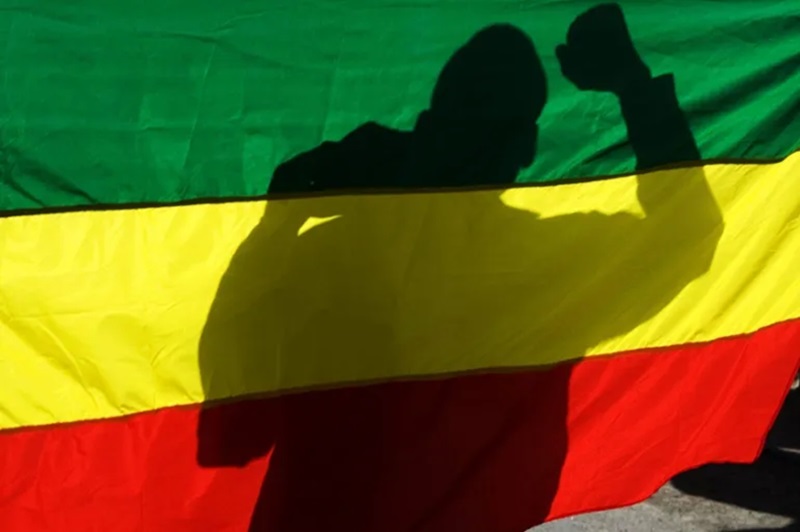(Jazz Village) UK release date: 2 September 2013
By Daniel Paton | 28 August 2013
Ethiopian percussionist and composer Mulatu Astatke has been making up for lost time – and who can blame him? Finally made into an international sensation as a result of the excellent Ethiopiques compilation series and the use of his music in Jim Jarmusch’s film Broken Flowers, he has since hit a new phase in his career, dramatically increasing his rate of productivity at a time when other artists might be slowing down (he is now 70).
Most interesting of all are the brave decisions Astatke has made to place himself in new and uncharted musical contexts. His work with The Heliocentrics has been bold and compelling, but even more fascinating is the line-up for his new ensemble Step Ahead. This band features some radical musicians from Britain, including one of the stalwarts of the free improvisation scene in the superb bassist John Edwards. Also featured are the deft, imaginative pianist Alexander Hawkins, acclaimed trumpeter Byron Wallen and the versatile, agile drummer Tom Skinner (Zed-U and Elmore Judd). This is a band with diverse backgrounds capable of handling a refreshingly wide range of material with confidence, precision and, frequently, with exuberance.
Astatke states his agenda plainly in the album’s liner notes claiming that “Ethiopia is culturally a very rich country which has also contributed so much to the development of modern music in the world”. Sketches Of Ethiopia therefore aims at challenging perceptions of Ethiopia which, for many people, have no doubt been formed by the indelible images of famine and war. Astatke and his current ensemble here promote a different Ethiopia – a vivid and detailed impression of a nation that has played its own cultural role, until recently mostly in the shadows of the global stage.
For music that clearly celebrates a tradition and a lineage, Sketches Of Ethiopia sounds remarkably fresh. That might be a result of the variety and quality of the musicians in the ensemble, but it also has a great deal to do with the depth and sophistication of Astatke’s arrangements. The nature of the grooves varies tremendously, from the 12/8 Afro feel of Azmari to the upbeat funk of Gambella (always handled adroitly by the excellent rhythm section), but Astatke’s considered, intricately mapped horn charts and rapid, darting melodic lines are a consistent thread.
Yet as well as imbuing this music with a strong authorial voice (on both his original compositions and the traditional pieces), Astatke also uses this project as a chance to let his musicians shine too. The wonderful Fatoumata Diawara guests on the full bodied, insistent closer Surma. The lengthy, expansive Assosa Derache allows for abundant stretching out, not least with a fiery, expressive trumpet solo from Wallen. It also veers in unexpected directions towards its conclusion, passing through a brief passage of mysterious improvisation before hitting a new, energised tempo. Some of Hawkins’ more mischievous and unconventional musical characteristics can also be heard bubbling away just beneath the surface here. It’s an immersive and joyous listening experience.
The album’s one moment of relative blandness (Gumuz, complete with unsympathetic synths) is curious not just given its rather directionless groove, but also in the context of an album that otherwise seems uninterested in compromise. It’s certainly not a necessary evil to widen Astatke’s audience – he’s already reached a new status without resorting to background music tactics. For the most part, Sketches Of Ethiopia is more than a reminder of his core talents – it’s a new and exciting exploration, another phase in a career that seems to have plenty of twists and turns left in it.















